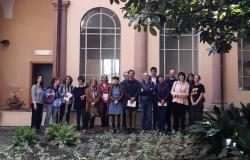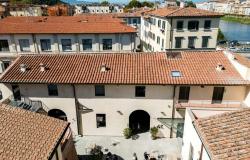“The mildest winter in contemporary history, halved rainfall and no snow”. According to experts Lorenzo Dorato and Riccardo Felli of Cemer, the Weather Center for Etruria and Rome, there are all the conditions for a hot and dry summer .
As with all of Italy and much of the Mediterranean, winter temperatures were exceptionally mild. The Viterbo area is no exception, as demonstrated by the data from the stations with consolidated and long historical series: Viterbo Santa Barbara and Ronciglione historic center.
Well, the meteorological winter that has just ended ended with an average of 9.4°C in the first case and 9.2°C in the second. “Very high values – they comment from Cemer – compared to a seasonal average which for the capital stands at 7.1°C (period 2005-2023), with a difference of 2.3°C from the recent average”. Looking at the December-February quarter in even more detail, extremely significant deviations can be seen for the two locations: December and January saw very mild temperatures with an average temperature that exceeded that of the 2005-2023 period by almost two degrees. Even warmer was February which for Ronciglione ended with an average above 10°C, precisely 10.1°C: a truly remarkable value, almost 3°C higher. “Such an anomaly is very marked and is rarely encountered,” continue the experts.
A season of extreme mildness even when compared to the most recent winters: the quarter in the capital surpassed the already very mild winters of ’06/07 and ’07/08, both recorded with an average of 8.7°C. “The comparison between the winter of ’22/23 and the winter of ’23/24 is also merciless – underlines Dorato – which closes with a difference of +1°C in Ronciglione and +1.5°C in Viterbo”. And then there’s the missing snow. “Another factor that testifies to a completely anonymous winter – highlights Felli – is the absence of snowfall and accumulations on the ground for the Cimini, not only at the lower altitudes (700/800m) but also for the 1050 meters of Monte Cimino , the highest peak in the area”.
In short, for experts the trend towards progressive warming in all seasons (including winters) is sadly confirmed.
Even in terms of rainfall, the winter just ended was rather dry. The data from Viterbo Santa Barbara and Ronciglione show a rainfall contribution of 132 mm and 177 mm respectively: compared to the averages it rained substantially half as much. Overall, these data confirm a period of low rainfall which has continued, with some brief wetter phases in the middle, since February 2021. “Fortunately, March – they continue from Cemer – saw the return of more significant rainfall while April ’24 returned to be stingy with rainfall, especially in the capital and in lower Tuscia. This is a month characterized by notable temperature changes, particularly in the internal valleys, where in a few days temperatures went from close to 30 degrees to values below zero, with consequent frosts, a hard blow for agriculture” .
And what about summer coming? “Precise forecasts cannot be made however – they warn – the
seasonal trends seem to show the risk of a very hot summer, but many doubts still persist; the uncertainty is linked to the effects of the sudden change between the Nino phase and the Nina phase, a situation relating to the temperatures of the waters of the Pacific Ocean. Certainly the risks of a very hot summer or at least very hot phases remain high. However, we can hope, especially for the second part of the summer quarter, in the alternation of some cooler and more unstable periods”.
© ALL RIGHTS RESERVED
Read the full article at
The messenger






